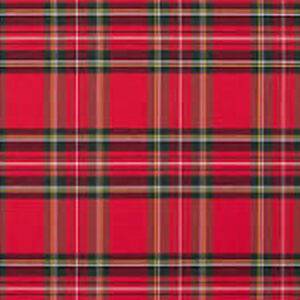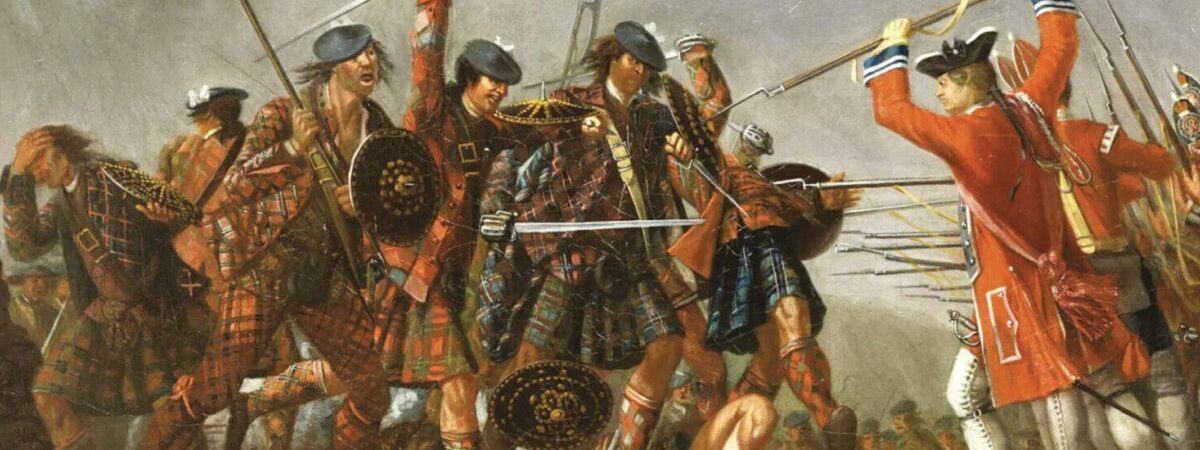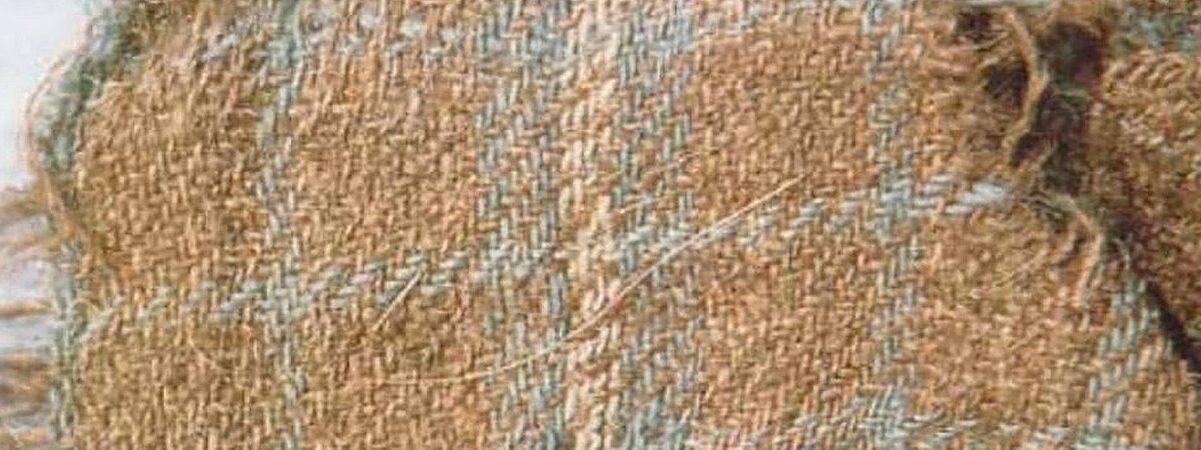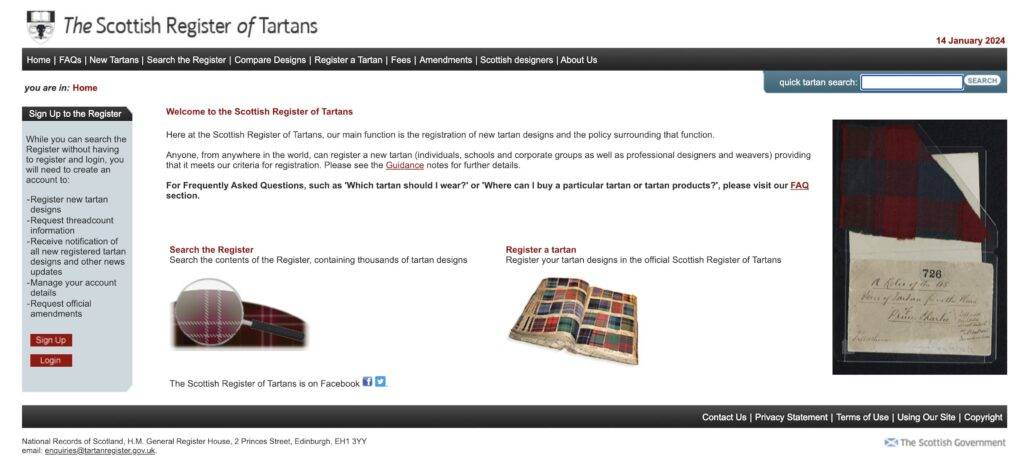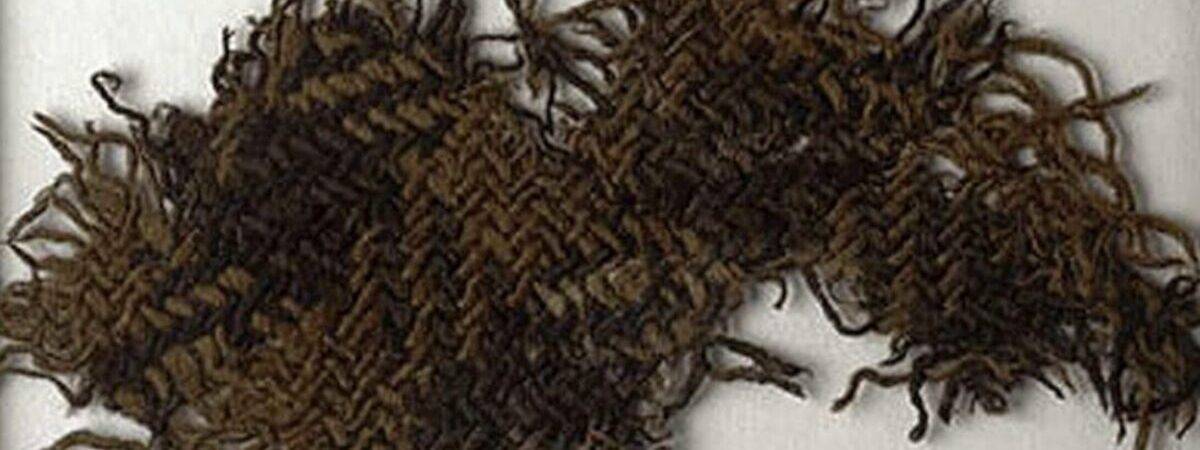Tartan, known in Scottish Gaelic as breacan [ˈpɾʲɛxkən], is a patterned fabric characterized by intersecting horizontal and vertical stripes in various colors, creating rectangular designs that range from simple to intricate. Initially made from woven wool, tartans are now produced using various materials. This fabric is closely linked with Scotland, evident in the tartan patterns typically found in Scottish kilts. The oldest known examples of tartan-like material, dating back around 3,000 years, were unearthed in Xinjiang, China.
In regions outside Scotland, tartan is often referred to as “plaid,” especially in North America. However, in Scotland, the term “plaid” specifically denotes a large piece of tartan cloth, wearable in various styles.
The creation of traditional tartan involves the use of pre-dyed threads in alternating colors, woven together in a matching warp and weft to form a simple 2/2 twill pattern. When observed closely, this pattern reveals short diagonal lines alternating at the intersections of different colors, which from a distance appear as new blended colors. The colored blocks repeat vertically and horizontally, forming a distinctive array of rectangles and lines known as a sett.
Originally, Scottish tartan was linked to the Highlands. Early versions were specific to local regions rather than any particular Scottish clan. Local weavers crafted these tartans to suit regional preferences, utilizing readily available natural dyes. The 1746 Dress Act, aimed at subduing warrior clans by banning Highland dress—a vital aspect of Gaelic Scottish culture—was repealed in 1782. Post-repeal, tartan ceased being the everyday attire for most Highlanders. However, tartan gained national symbolism when King George IV donned a tartan kilt during his 1822 visit to Scotland, a trend further popularized by Queen Victoria. This period saw a politically charged rise in “tartanry” and “Highlandism.”
The first known uniform tartan dates back to around 1713, with some indications of earlier militia use. It wasn’t until the early 19th century that specific patterns were designed for Scottish clans, with most traditional patterns established between 1815 and 1850. The Victorian era’s introduction of artificial dyes allowed for the cheap production of numerous patterns, leading to the mass production of tartan fashion fabrics, which evoked a nostalgic and increasingly aristocratic and profitable view of Scottish history.
Today, tartan transcends textiles, referring to the pattern itself across various mediums. Its use has spread beyond Scotland, particularly in countries influenced by Scottish culture. Nevertheless, tartan-style patterns have long existed in other cultures, such as Japan’s complex kōshi fabrics dating back to at least the 18th century, and Russia’s use of gold and silver threads in similar designs since the early 19th century. Tartan patterns are also seen in Maasai shúkà wraps, Bhutanese mathra weaving, and Indian madras cloth, each distinct from the Scottish variation.
Etymology and terminology
The English and Scots term “tartan” may have originated from the French word “tiretaine,” referring to a type of linsey-woolsey fabric. Alternatively, it might derive from the Scottish Gaelic words “tarsainn” or “tarsuinn,” meaning ‘across’ or ‘crossing over’. Another theory suggests a French origin, with the word “tartarin” or “tartaryn” (recorded as “tartyn” in 1454), implying a cloth associated with Tartar styles. However, tartan is distinct from “tarlatan,” a term for a loosely woven muslin similar to cheesecloth. In usage, tartan serves as both a mass noun (e.g., “12 metres of tartan”) and a count noun (e.g., “12 different tartans”).
Historically, tartan referred to the type of weave rather than colored patterns. In the early 19th century, tartan cloth was sometimes described as “plain coloured … without pattern.” The patterned cloth from the Gaelic-speaking Scottish Highlands was known as “breacan,” meaning ‘many colours’. Over time, the terms tartan and breacan merged, both referring to the specific patterned style on cloth.These names originate from the Old Irish word “Goídel/Gaídel.” In Early Modern Irish, the terms were spelled “Gaoidheal” (singular) and “Gaoidheil/Gaoidhil” (plural). In contemporary Irish, these are spelled as “Gael” (singular) and “Gaeil” (plural). Scholar John T. Koch suggests that the Old Irish name was derived from an archaic Welsh term “Guoidel,” meaning “forest people,” “wild men,” or later, “warriors.” This term appears as a personal name in the Book of Llandaff. Its root is linked at the Proto-Celtic level with the Old Irish “fíad” meaning ‘wild,’ and is ultimately derived from the Proto-Indo-European *weidh-n-jo-. This Proto-Indo-European word is also the origin of “Fianna” and “Fenian.”
In medieval Ireland, the term “Gaoidheal” was specifically used by bardic poets, who were the cultural elite, to refer to individuals claiming descent from the mythical Goídel Glas. Even the Gaelicized Normans born in Ireland, who spoke Irish and patronized Gaelic bardic poetry, like Gearóid Iarla, were labeled “Gall” (foreigner) by Gofraidh Fionn Ó Dálaigh, the then Chief Ollam of Ireland.
The design of a particular tartan is known as its “sett.” This pattern consists of lines at specified widths intersecting at right angles, blending into one another. The term “sett” can denote the minimal visual representation of the complete tartan pattern or its textual representation (as in a thread count).
The ancient Greeks, notably Ptolemy in his 2nd-century work “Geographia,” identified a group known as the Iverni (Ιουερνοι in Greek) in southwest Ireland, possibly drawing from earlier sources. Scholars like T. F. O’Rahilly have linked the Iverni to the Érainn of Irish lore. The Érainn, who traced their lineage to a Milesian ancestor named Ailill Érann, were a dominant force in Ireland prior to the rise of Conn of the Hundred Battles and Mug Nuadat’s descendants. This group included clans like the Corcu Loígde and Dál Riata. Ancient Roman authors, such as Caesar, Pliny, and Tacitus, used the name “Ivernia” as a basis for “Hibernia.”
The name “Hibernian” derives from this, although the Romans often referred to Ireland as Scotia, and its people as Scoti. In Ireland, the term “Éireannach” (Irish) acquired its contemporary political connotation as a primary identifier from the 17th century onwards. This is evident in the works of Geoffrey Keating, who proposed a Catholic alliance between the native Gaoidheal and Seanghaill (Normans) against the Nuaghail or Sacsanach (Protestant New English settlers).
Today, the term tartan has expanded beyond textiles to describe patterns on various media, including paper, plastics, packaging, and wall coverings.
In North America, “plaid” is commonly used interchangeably with tartan. The word “plaid,” originating from the Scottish Gaelic “plaide” meaning ‘blanket’, initially referred to any rectangular garment, often made of tartan, that could be worn in various ways. This included the belted plaid or “great kilt,” the arisaid (a large shawl turned into a dress), and different types of shoulder capes like the full plaid and fly plaid. Over time, the term plaid came to be associated directly with blankets. Historically, terms like “plaiding” or “pladding” were sometimes used to refer to tartan fabric.


